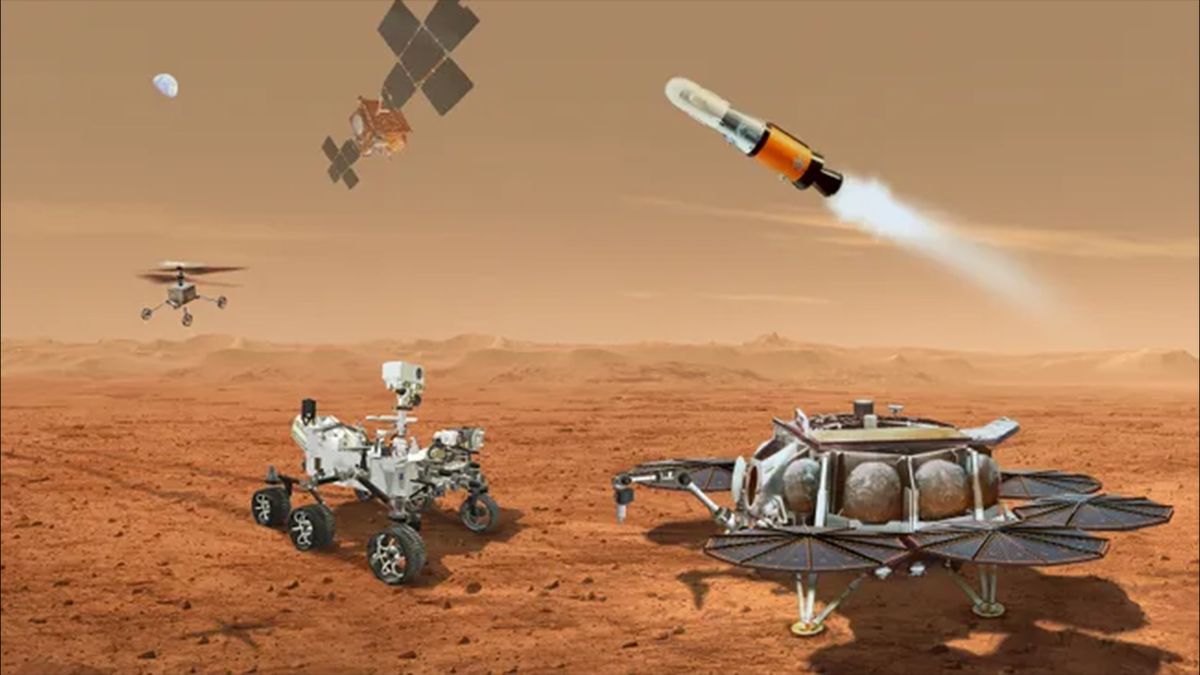NASA is in search of an innovative approach to retrieve its valuable Mars samples back to Earth. These samples are currently being gathered by the Perseverance rover in the Jezero Crater, a location that once harbored a lake and a river delta billions of years ago. Acquiring these samples stands as a primary scientific objective for NASA, as the analysis of pristine Martian material in advanced laboratories worldwide could provide crucial insights into the planet, potentially shedding light on past life existence, as indicated by NASA officials.
While NASA has had a Mars sample-return (MSR) strategy in place for some time, setbacks such as delays and budget overruns have led to the impracticality of the original plan, as stated by NASA authorities on Monday. The projected cost of $11 billion and the extended timeline until 2040 were deemed unfeasible, prompting the need for a revised approach.
An independent review board’s upper-end estimate of \(11 billion, released in September, contrasted sharply with a previous study from July 2020, which approximated the total MSR cost to be between \)2.5 and $3 billion. Following an internal analysis of the September findings, NASA concluded that under the existing architecture, returning Perseverance’s samples to Earth by 2040 would not be viable due to financial constraints and the priority given to other significant scientific missions like the Dragonfly drone expedition to Titan, Saturn’s largest moon.
The original plan involved deploying a NASA lander to the Jezero Crater, equipped with the Mars Ascent Vehicle (MAV) and potentially multiple retrieval helicopters. Perseverance would transfer the samples to the lander, which would then load them onto the MAV for launch into Mars orbit. A spacecraft from another agency would intercept the sample container and commence the journey back to Earth.
In a bid to reduce costs and expedite the sample return process, NASA is exploring alternative strategies. Cost savings could benefit other scientific endeavors within the agency, while an accelerated timeline might facilitate future crewed missions to Mars. NASA is actively soliciting innovative MSR proposals from its Jet Propulsion Laboratory in Southern California and other research centers, as well as from the private sector. An industry day is scheduled for April 22, with proposal submissions accepted until May 17, aiming to gather diverse and fresh ideas for consideration.
While the specifics of the new plan are yet to be defined, potential adjustments could involve a more compact and cost-effective MAV and a revised sample-return quantity. Despite the challenges posed by the unprecedented nature of the mission — no rocket has ever been launched from another planet’s surface — NASA remains steadfast in its commitment to retrieving the Martian samples, considering it a significant national objective.
